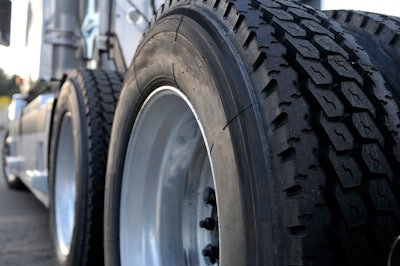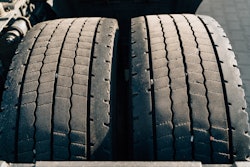
One of the best things you can do to get the most miles out of your tires is to stay on top of balancing.
Balancing helps detect irregular wear patterns early and allows you to take steps to get your tires running properly again. It will also improve the ride for your drivers.
So, what do you look for and what should you do? First, start by asking yourself a few questions.
What are some symptoms/signs that wheels may be out of balance? Are the signs different for steer tires verses drive and trailer tires?
Typically, for a steer tire, when a tire isn’t balanced you’ll see cupping or scalloping (wavy wear) on the shoulder ribs. Over time that can progress to the intermediate ribs. That’s why it’s so important to catch a balancing issue early.
Another sign that a steer tire may be out of balance is excessive wear on one area of the tread compared to the tread wear that is 180-degrees from that spot. Other indicators can be spot wear or randomly worn areas around the tire circumference.
For drive tires, a telltale sign of tire imbalance is excessive or fast shoulder wear. On the trailer position, if you see diagonal or localized wear spreading from the shoulder across the tread, you need to take a closer look. You might also see cupping or scallop wear on shoulder ribs, which may transfer to the intermediate ribs.
What happens when tires aren’t balanced?
If you ignore signs of tire imbalance, irregular and/or fast wear can occur, and that can also mean ride disturbance and vibration – something drivers don’t like. Gone unchecked, it will also mean you’ll have to remove tires early in life, and that has a direct impact on your overall tire budget. If tire imbalance is severe, it could eventually damage your truck’s mechanical components. So, not only will you lose money on the tire from being removed early due to irregular wear but also your truck may end up needing additional mechanical work done.
How frequently should tires be balanced?
Tires should be balanced at the time of installation, so starting off you’re in good shape. After that, there is no set mileage for re-balancing. The alert to re-balance comes at the first signs of irregular wear or when drivers complain about vibration. Another thing to look for is when you’re inspecting your tires and wheel. If you notice a wheel weight missing, then the tire(s) should be re-balanced.
Do all tires need to be balanced? Should some tires be prioritized, or require more frequent balancing?
All tires should be regularly balanced, but sometimes that doesn’t always happen. Some fleets balance the steer tires, but opt to not balance the drive and trailer tires on a regular basis. That really shouldn’t be the case. If you want to maximize ride comfort, ensure long life and optimize fuel economy, then all tires should be balanced when signs indicate an issue.
What’s the difference between static and dynamic balancing?
Static balancing is typically used for light or moderate imbalance issues. To do the balancing, a tire is placed in a vertical supporting device with a spindle to measure the balance on one axis. Based on the “imbalance” small weights are placed on the wheel rim until the tire is balanced.
Dynamic balancing entails the use of a machine and computer and rotates the tire at various speeds. It then calculates how much weight is needed on the wheel and where it should be placed. It’s very precise.
Static balancing typically reduces the tire/wheel assembly bounce or “hop” during the tire’s rotation, while dynamic balancing also reduces the side-to-side – or wobble. Most fleets choose to dynamically balance their tires, and that’s a good call. A tire that is dynamically balanced is also statically balanced. However, tires that are statically balanced are not necessarily dynamically balanced.
Should I use wheel weights or internal balancing compounds?
This is often debated between fleets and service providers. Both can improve vehicle ride and reduce potential for irregular wear. So, it really comes down to personal preference.
There can be pros and cons with each method. Over time, wheel weights may fall off causing the need for a re-balance – and of course, you’ll need a balance machine. Internal balancing compounds have the potential to clog or damage valve stems and must be completely removed prior to retreading.
Which is better, on- or off-vehicle wheel balancing?
When possible, off-vehicle tire/wheel assembly balancing is preferred. But, there is still a place for on-vehicle balancing. If a tire or wheel assembly is balanced and after installation a vibration still exists, you can balance the assembly on-vehicle in an attempt to balance the whole wheel-end assembly.
Are there best practices a fleet should consider to minimize the impact of tire imbalance?
Yes, we recommend working with your service provider to find and implement the best tire/wheel assembly balancing method for your fleet. And, you should follow TMC and TIA guidelines for tire mounting and installation.
To really get the most out of your tire program you should establish routine maintenance schedules, procedures and guidelines. Plus, you should monitor how well those procedures are working. That can be done through routine reviews and inspections, and through scrap tires analysis.
Phil Mosier is the Manager of Commercial Tire Development at Cooper Tire & Rubber Company. A 20 year tire professional, he is responsible for the design and development of commercial truck and bus tires for the North and South America regions. Phil and his team have brought to market many successful commercial truck tires in the Cooper Commercial Series and Roadmaster brand tire lines.












